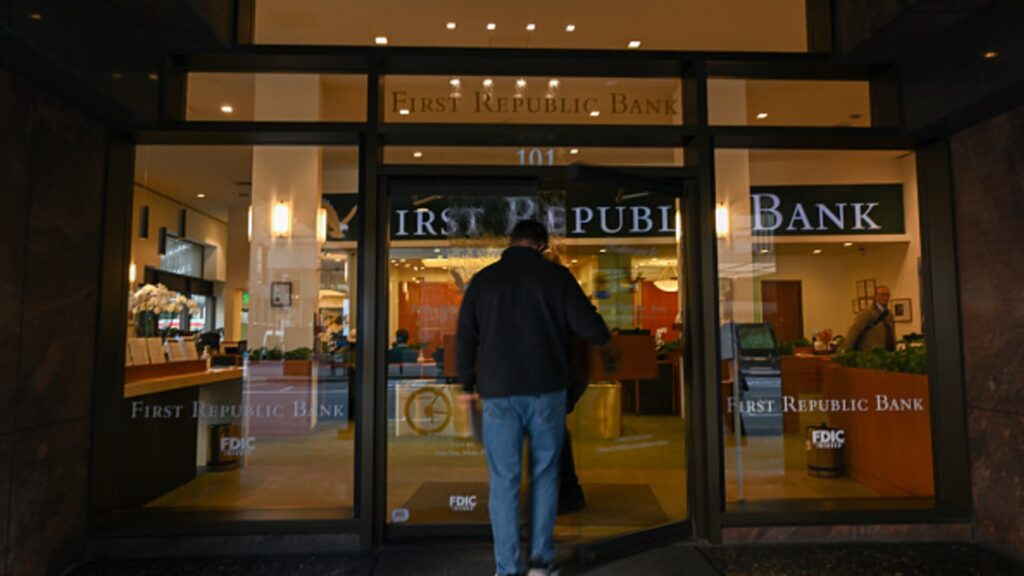First Republic Bank headquarters is seen on March 16, 2023 in San Francisco, California, United States.
Tayfun Coskun | Anadolu Agency | Getty Images
The surge of deposits moving from smaller banks to big institutions including JPMorgan Chase and Wells Fargo amid fears over the stability of regional lenders has slowed to a trickle in recent days, CNBC has learned.
Uncertainty caused by the collapse of Silicon Valley Bank earlier this month triggered outflows and plunging share prices at peers including First Republic and PacWest.
The situation, which roiled markets globally and forced U.S. regulators to intervene to protect bank customers, began improving around March 16, according to people with knowledge of inflows at top institutions. That’s when 11 of the biggest American banks banded together to inject $30 billion into First Republic, essentially returning some of the deposits they’d gained recently.
“The people who panicked got out right away,” said the person. “If you haven’t made up your mind by now, you are probably staying where you are.”
The development gives regulators and bankers breathing room to address strains in the U.S. financial system that emerged after the collapse of SVB, the go-to bank for venture capital investors and their companies. Its implosion happened with dizzying speed this month, turbocharged by social media and the ease of online banking, in an event that’s likely to impact the financial world for years to come.
Within days of its March 10 seizure, another specialty lender Signature Bank was shuttered, and regulators tapped emergency powers to backstop all customers of the two banks. Ripples from this event reached around the world, and a week later Swiss regulators forced a long-rumored merger between UBS and Credit Suisse to help shore up confidence in European banks.
Wearing many hats
The dynamic has put big banks like JPMorgan and Goldman Sachs in the awkward position of playing multiple roles simultaneously in this crisis. Big banks…
Read the full article here





